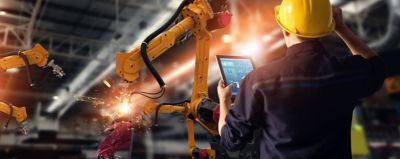If you're deciding on a piston compressor, this guide will point you in the right direction. It also provides useful information for those with existing machines, who are looking to upgrade.
The main advantage of these machines is their relatively compact size. This small footprint allows for some models to be transported between job sites. If this is what you need, check out our Engine Air outdoor models.
However, if your work demands all day compressed air, you may benefit from a rotary screw model. In fact, our variable speed drive (VSD) machines are built to be highly efficient and meet most applications.
A VSD rotary screw compressor is advantageous for those currently running multiple small machines to complete a job. By operating rotary screw equipment, you'll consolidate and balance your workload evenly - minimising wear and tear. In addition, you’ll save on energy costs by using one machine.
Such reductions in consumption are made possible due to various controls and monitoring tools available for rotary screw compressors. This technology uses data and analytics to optimise workflow. Also, these machines are built with highly sophisticated internal parts.
That being said, our piston compressors are built with long-lasting, durable components. It's all a matter of what makes the most sense for your application.
Oil-injected vs. oil-free
The basic principles of how a piston compressor works usually requires oil to operate. The motor comprises a crankshaft, rod and piston, cylinder, and valve made of metal.
Due to the levels of friction created, this setup tends to generate high levels of heat. Oil is injected to keep compressed air cool, and is separated out with a filter.
The main benefit of an oil-free model is the production of clean, high quality air. Also, they save on maintenance costs. Oil-free machines incorporate alternatives to minimise heat caused by metal - meaning less wear.
In addition, oil-free models include an internal fan to keep things cool. While this equipment is generally more costly than oil-injected models, they're ideal for sterile settings.
These machines are the right solution for those with environmental concerns and need the best possible air quality. This sentiment particularly applies to those working with food and medical equipment.
If you'd like to read more about the basic principles of how a piston compressor works, check out this guide. It provides more insight on their internal arrangement.
Piston compressor advantages & applications
In a separate guide, we covered the benefits of piston compressors depending on your needs. As mentioned in the introduction, these machines are often transportable.
Whether needed for construction, hobby crafts, auto repair, chemical industries, agriculture, refrigeration, oil plants, or gas processing, they meet most small demands.
Since some piston compressors are designed to be used outside, they're available with giant rugged wheels and solid steel construction. There's also models that require no electricity to operate, using fuel as energy.
For quiet indoor environments where sound is important, we offer relatively silent equipment. For example, the Fonolife PRO model only generates 64Db of noise.
Due to this low sound level, they work well for personal use in a DIY workspace or craft room. If this is what you’re seeking, our Blueline MS or MZ models provide up to 2HP of power and work for most home applications.
If portability is non-negotiable for your needs, then a piston compressor is the best choice for you.
Deciding between piston & rotary screw
Due to their small footprint, piston compressors are limited in what they can do. For bigger industrial needs, demanding 100% all day air flow, a rotary screw air compressor is the best option.
Recent advancements in rotary screw compressor technology, particularly with variable speed drive (VSD) models, tends to make these machines highly efficient.
As we're always innovating, our recent rotary screw models come built with the latest energy standards in mind. They're designed to reduce your total operational cost as much as possible.
Mentioned in the introduction, rotary screw compressors are available with advanced controls and monitoring tools, providing useful data and analytics on compressed air usage. These devices allow you to connect multiple machines together, and work well in a smart factory.
While these machines are larger than their piston counterparts, their design minimises consumption. This statement is particularly true for VSD models, which change motor speed depending on air demand.
If you're using more than one piston compressor, chances are upgrading to a VSD rotary screw compressor could save you in the end.
You can read more about rotary screw compressors, in our guide. You'll find interesting features like energy recovery, and other ways they help minimise downtime.
Choosing the right set up
Hopefully this guide provides a good overview on what to look for in your next air compressor. There are benefits to both piston and rotary screw models. It's really a matter of your particular needs and how you'll use the equipment.
If you need help planning for the future, and are currently running a setup with piston compressors, feel free to get in touch. Our team is here to help you find the best solution. We offer a full product line to create a custom setup to grow with your business.
Get tailored advice
Still have questions after reading? Our expert is ready to help you make sense of it all and guide you to the best solution.
Write to an Expert Today – Get the answers you need.






